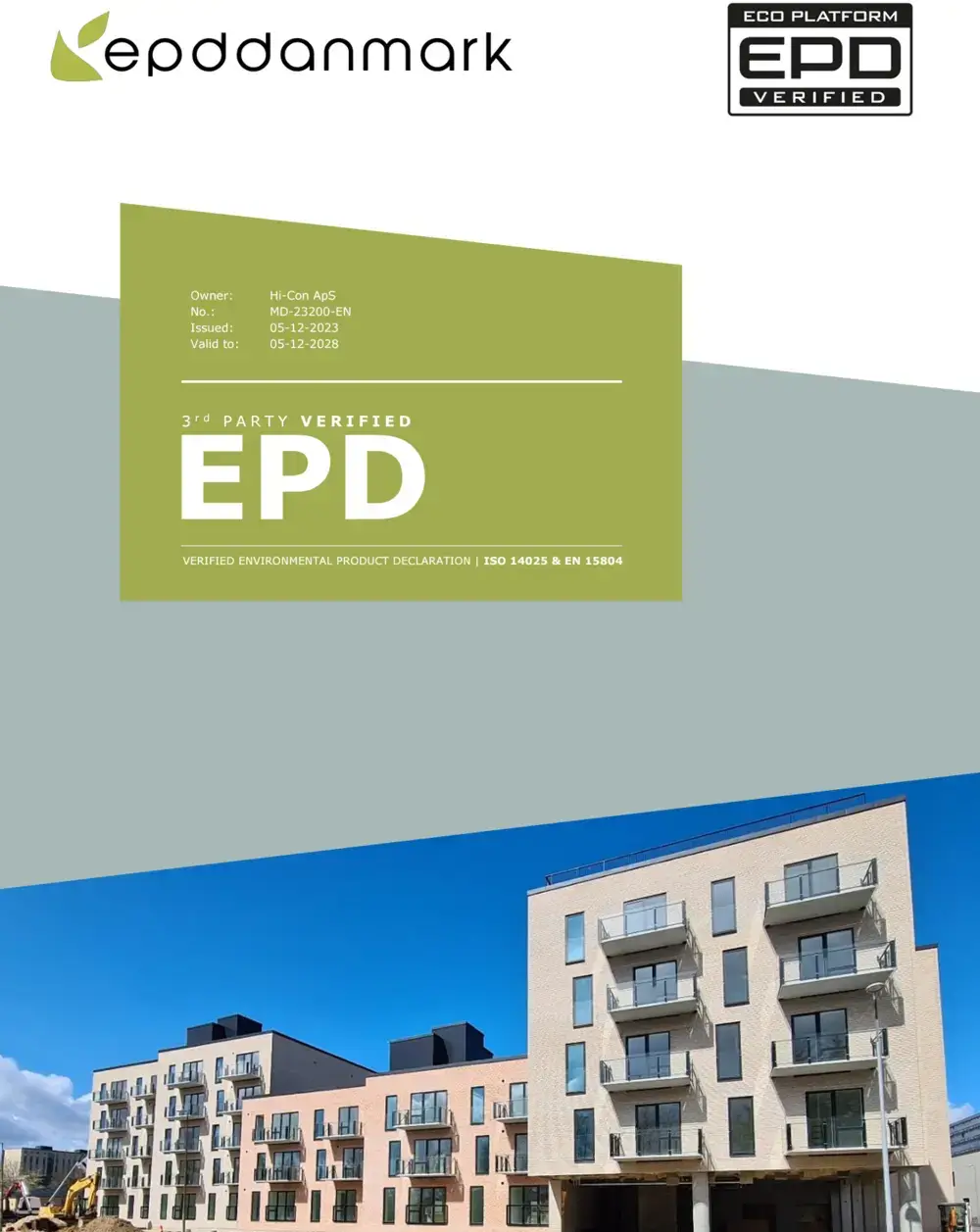The above considerations are general and work just as well for steel, regular concrete, or wood. So what does Ultra High Performance Concrete have to offer?
Ultra High Performance Concrete offers durability, fire resistance, and aesthetic freedom to shape and design the appearance of balconies. But first and foremost, Ultra High Performance Concrete offers these properties in combination with limited dimensions - and thus low loads.
By combining the reduced load with columns in Ultra High Performance Concrete and L-columns, it is possible to keep the vertical loads from the balconies on the existing building to an absolute minimum - and keep horizontal loads at a manageable level.
The first principle - freestanding straight columns, makes it possible to add large external balconies to a building without significant vertical loads on the existing structure - which is illustrated in the image from PM in Brønderslev, which you can find at the top of this post. Below are pictures of the original building with niche balconies, which were transformed into indoor spaces during the renovation. New balconies in Ultra High Performance Concrete were placed outside, and insulation and thin cladding panels were added to complete the aesthetic transformation.
The biggest advantage of Ultra High Performance Concrete in this case is the low weight and slender design (the slabs are only 80 to 100 mm with a 110 mm visible edge as a design feature), and the few challenges because the tolerances could be handled in the joints inside the new facade. Columns and slabs in Ultra High Performance Concrete can also be used with brick facades as shown below. Due to the slender design (60 to 70 mm), it was sufficient to remove just 2 layers of bricks to handle the brackets that were cast on-site to attach the balconies to the front wall.




